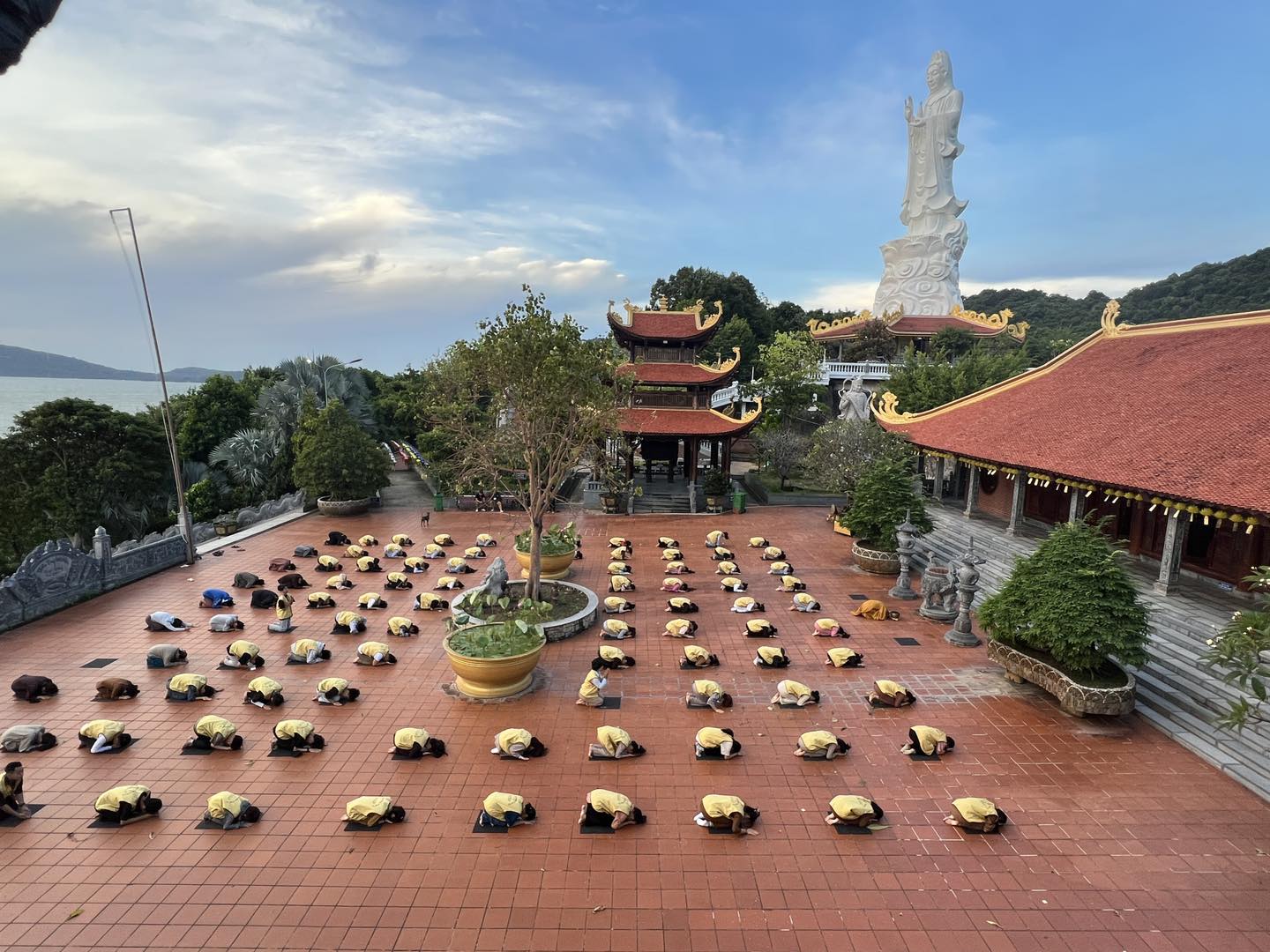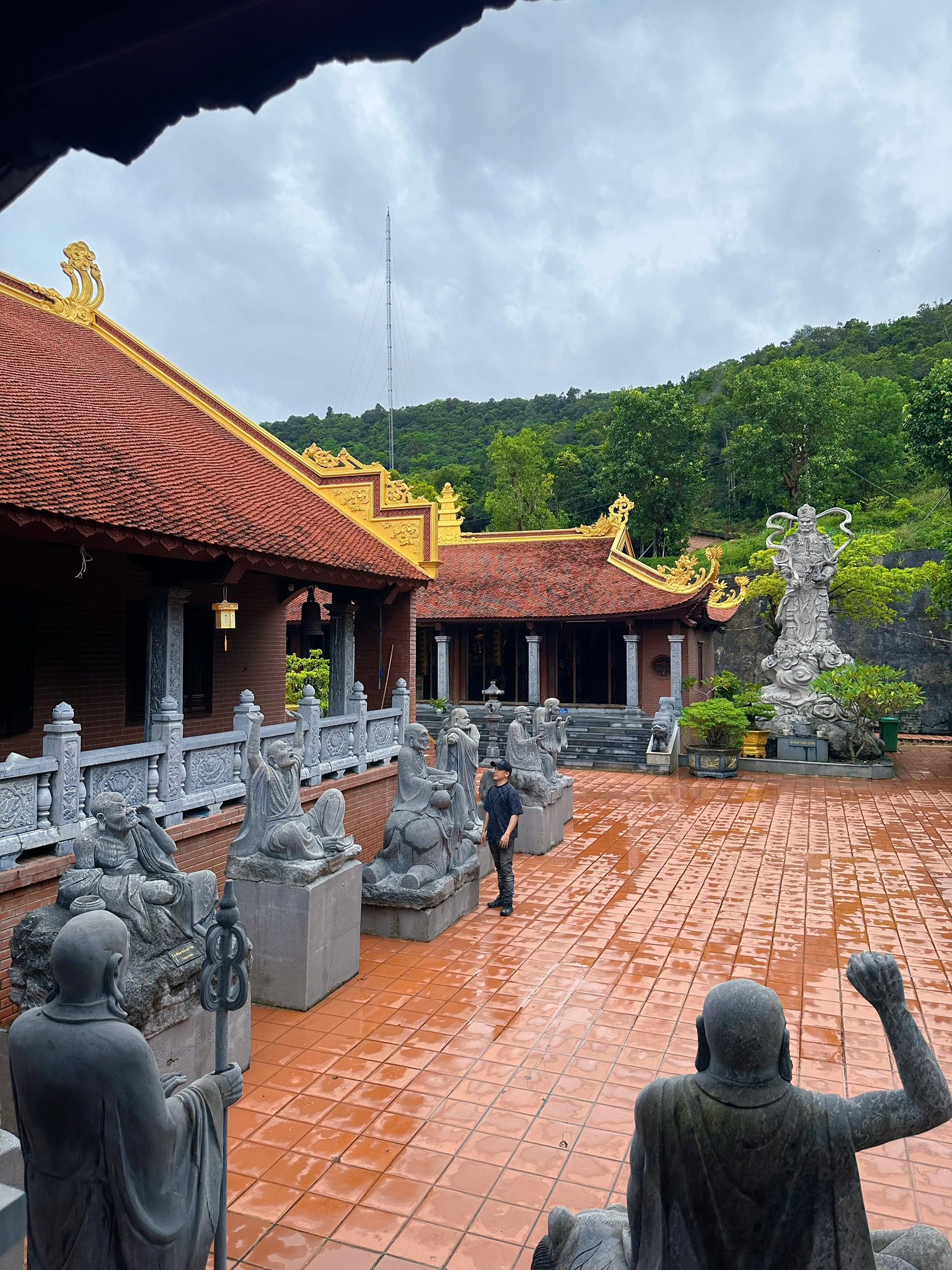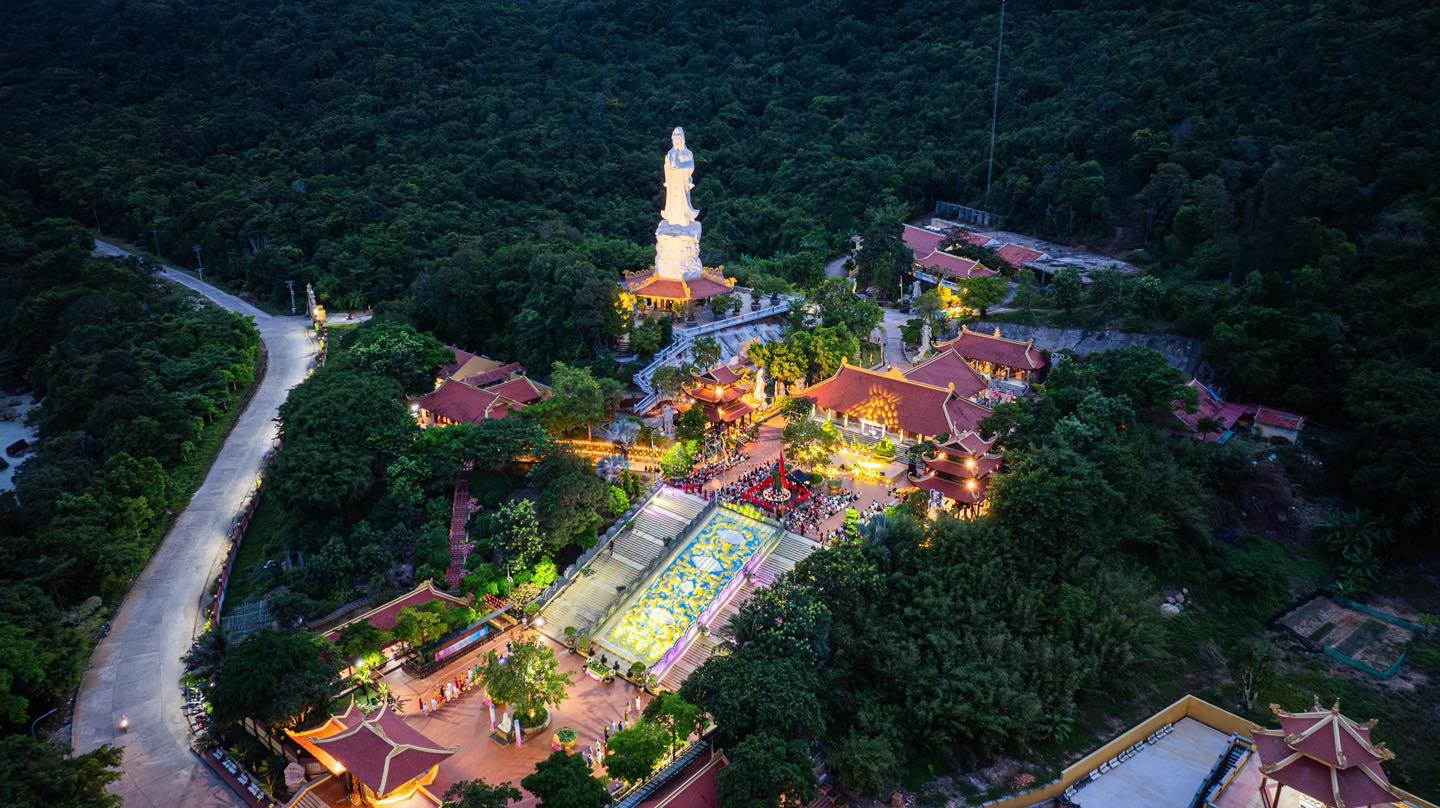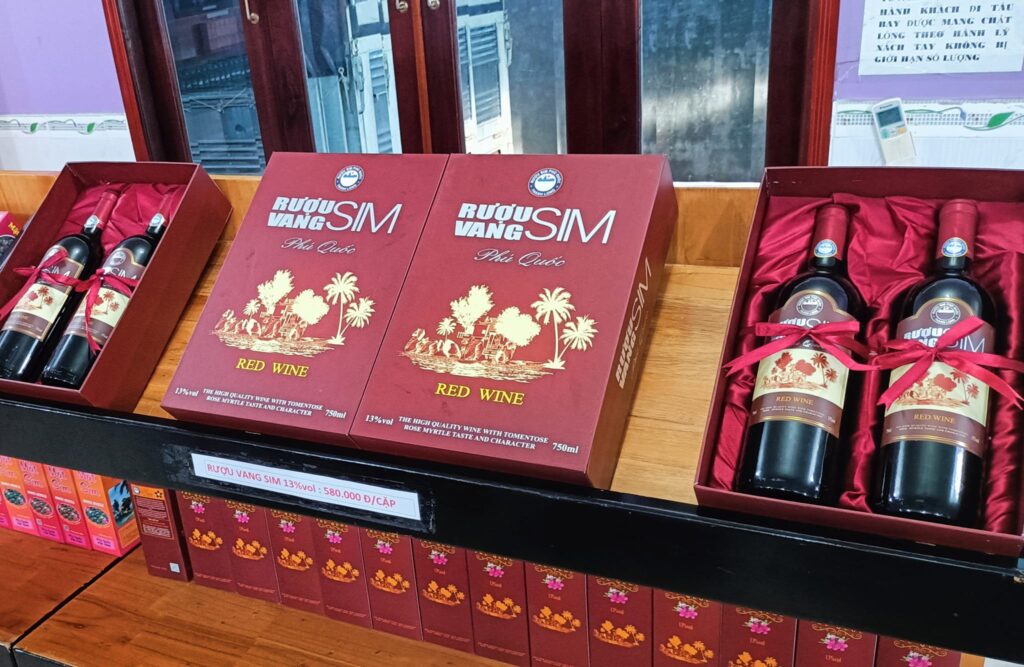Ho Quoc Pagoda, also known as Truc Lam Ho Quoc Zen Monastery, is the largest seaside Buddhist temple in the Mekong Delta region and one of the most iconic spiritual landmarks of Phu Quoc. With its back leaning against the mountains and its façade overlooking the vast ocean, the pagoda blends breathtaking natural scenery with ancient Vietnamese Buddhist architecture inspired by the Ly–Tran dynasties. Since its completion in 2011–2012, Ho Quoc Pagoda has welcomed millions of visitors each year, becoming one of the island’s most beloved spiritual, cultural and tourist destinations.
Located in Suoi Lon Hamlet, Duong To Commune, the pagoda sits about 20–25 km from Duong Dong town and around 10 km from An Thoi’s Sunset Town. Its serene mountainside setting combined with panoramic ocean views makes it a rare gem—majestic yet tranquil, ancient yet open to the sky and sea.
The History and Construction of Ho Quoc Pagoda
The idea to build Truc Lam Ho Quoc Zen Monastery began with a desire to bring the spirit of Vietnamese Buddhism—especially the teachings of the Truc Lam Yen Tu Zen Sect—to the southwestern region. General Pham Van Tra and former Prime Minister Vo Van Kiet were among the earliest advocates who envisioned the pagoda as a national spiritual and cultural project. Construction started on October 14, 2011, lasted 14 months and involved more than 1,000 workers. The total investment reached 100 billion VND, with 80 billion spent on the pagoda’s structures and 20 billion on land clearance and road development. The main complex was inaugurated on December 14, 2012, after which other internal buildings continued to be completed throughout 2013–2014. Today, Ho Quoc Pagoda stands as one of the largest Buddhist centers in the southwest, playing an essential role in preserving spiritual life and contributing to the growth of Phu Quoc’s cultural tourism.

Scale and Layout of the Pagoda
The entire spiritual complex covers 110 hectares, including 13.2 hectares dedicated to the pagoda grounds and nearly 100 hectares of surrounding primary forest. The entrance begins with the three-gate ceremonial arch, symbolizing enlightenment, the cessation of attachment and liberation from suffering. Behind the gates, visitors step onto an expansive courtyard and encounter a nearly 3-meter jade-marble statue of Shakyamuni Buddha, a popular spot for prayer and contemplation.
The main hall—Dai Hung Bao Dien—is designed in the traditional five-bay, two-wing style of ancient northern temples and constructed entirely from precious ironwood. At the center sits a gold-plated statue of Shakyamuni Buddha, flanked by Manjushri Bodhisattva on a lion to the right and Samantabhadra Bodhisattva on an elephant to the left. The pagoda also houses a stupa containing Buddha relics, a shrine to Mother Au Co where Dong Son bronze drums and ancient cultural engravings are preserved, and the ancestral hall dedicated to the three founders of the Truc Lam Zen Sect: Tran Nhan Tong, Phap Loa and Huyen Quang. Meditation halls, lecture halls, a One-Pillar Pagoda replica, a Guanyin Courtyard and a worship area for Ksitigarbha Bodhisattva extend further around the grounds.

Architectural Style – A Revival of Ly–Tran Dynasty Aesthetics
Ho Quoc Pagoda showcases quintessential features of Vietnamese Buddhist architecture: curved lotus-shaped roof tiles; dragons of the Tran dynasty carved along stairways and balustrades; a grand stone staircase of seventy steps decorated with the iconic “two dragons flanking a lotus” relief; giant ironwood pillars symbolizing longevity; and sophisticated carvings of clouds, water, lotuses, dragons and phoenixes adorning doors, beams and corridors. Many statues, including the eighteen Arhats lining the path to the ancestral hall, are carved from precious stone, large timber or solid bronze, adding to the sense of sacred permanence.
Prominent Highlights Within the Pagoda Grounds
Visitors often begin at the three-gate entrance, which opens onto a vast ocean-facing courtyard offering a serene space for meditation and photography. The golden-plated Shakyamuni statue in the main hall is considered the spiritual heart of the pagoda. Behind the main hall stands a towering white-stone statue of Avalokitesvara Bodhisattva, more than 30 meters high, modeled after the image of Guanyin of the South Sea. Nearby, the Phu Quoc One-Pillar Pagoda sits gracefully above a lotus pond, while the bell tower and drum tower echo the deep, resonant sounds associated with Buddhist temples. The monumental dragon-lotus relief near the staircase is among the most photographed symbols of the site.

Cultural and Spiritual Activities
Ho Quoc Pagoda hosts a wide range of spiritual activities year-round. Visitors frequently come to offer incense and prayers for peace, good fortune and protection for their families. Short meditation retreats, Dharma talks and special practices such as the Ksitigarbha Ceremony or the youth-friendly “Back to the Temple” retreats are held regularly. The annual memorial ceremony for the founder of the Truc Lam Sect, King Tran Nhan Tong, takes place from the 30th day of the tenth lunar month to the first day of the eleventh month, attracting thousands of followers. Free vegetarian meals are served from 11:00 to 17:00 daily, with donations accepted on a voluntary basis.
Travel Tips for Visiting Ho Quoc Pagoda
The most beautiful times to visit are early morning between 6:00–9:00 or late afternoon between 15:00–17:00, especially during the dry season from November to April. From Duong Dong, travelers follow 30/4 Street, then Nguyen Van Cu Road before turning left at the sign toward Ho Quoc Pagoda. Visitors are encouraged to dress modestly, remain quiet, avoid touching statues and sacred objects, and remove shoes before entering the main hall.

A Contender for One of Vietnam’s Most Beautiful Temples
Ho Quoc Pagoda is embraced by ancient forest to the back and the shimmering turquoise waters of Bai Dam to the front. Below it lie the floating fishing villages of southern Phu Quoc. The blend of ocean breeze, the sound of temple bells and the soft rustling of forest leaves creates a soothing spiritual atmosphere unlike anywhere else on the island. Many visitors describe their experience here as a moment of clarity and inner peace—as though the worries of everyday life are gently washed away by the wind and waves.
Ho Quoc Pagoda is more than a temple; it is a symbol of faith, culture and the natural beauty of Phu Quoc. Whether you seek spiritual reflection, architectural appreciation or simply a breathtaking viewpoint, this sacred sanctuary is a place no traveler should miss when visiting the Pearl Island.








